Stamford Hill is right at the northern end of the London Borough of Hackney, bordering Haringey/Tottenham. I’ve lived around there for about 15 years now and have always had an interest in its history.
Last May, Richie (Maharishi Hi-Fi / Musical Fever) hosted another one of his excellent nights, this time at the Mascara Bar (previously Panagea Project, opposite Morrisons Supermarket). I’m no die-hard Ska or Rocksteady expert, but Richie’s nights are always excellent (see reviews here and here). I’ll happily leave the selections to Richie and his favoured DJs any time – an amazing night for the old and young is standard.
Riche also has an uncanny habit of organising great events within about 2 minutes of my flat, which is most definitely to his credit. This time one of my favourite reggae writers of all time, Penny Reel, was on the bill – and there was a local history angle. I was sold.
It was an education, musically and socially. I had the pleasure of meeting Nick Kimberley, who published the world’s first reggae fanzine, Pressure Drop, with Penny Reel in 1974. I get very excited about things like that and the connections/differences with Woofah. Before that night I didn’t know anything about the R&B Records operation. Naturally there were tunes aplenty and further help was on hand in the form of a text produced especially for the night by Malcolm Imrie, who has kindly allowed me to republish it here:
R&B Records
1959-1984
Bunny Lee: “The main t’ree people was when I come a Englan’ forty odd years ago, right, was who now. . .? Mrs King. . . and. . . husband name Benny. Benny use’ to come a Jamaica too, yunno, an’ put out — a get record. Him use’ to put out anyt’ing wha Ken Lack [Caltone imprint] make, Rita an’ Benny, y’understan…”
Rita and Benny King, R&B Records?
“Yes, Rita an’ Benny, right. Them did ‘aye a big distributing place from — dem was powerful people inna the business. Mrs King was a force to reckon with. Them use’ to have a place inna Stamford Hill. If she na sell the record is better yu come outta the business.”
Chuckles.
“When she talk everybody jump!”
Interview with Bunny ‘Striker’ Lee by Pete I on www.reggae-vibes.com
******
In 1959, Stamford Hill was a lot livelier than it is today. A good place to be a teenager. Full of cafes, like the popular E&A salt beef bar on the corner of Clapton Common and Stamford Hill or Carmel’s kosher restaurant a few doors further down on the other side of the street (oddly, the newish shop there is still called Carmel). Even Windus Road (just round the corner from the Mascara Bar) had three milk bars — you can still see the sign of one of them outside what is now a Hassidic pizza takeaway.
A lot of people would hang out and play pinball in “the Schtip”, the Yiddish name (I think it means ‘taking money’) everyone used for the amusement arcade almost next door to the E&A (it’s still there, with a different name and no pinball). As well as the grand Regent (where Sainsbury’s now stands), soon to be the Gaumont and finally the Odeon, you could take your pick of around eight other cinemas within half a mile.
Three years earlier, ten-year-old local girl Helen Shapiro was singing in a group called Susie and the Hula Hoops, along with a boy called Markie Feld, later to change his name to Marc Bolan. Two years on, in 1962, she’d have two number one hits. In ’59 she and Markie were both members of Stamford Hill Boys and Girls Club in Montefiore House (now replaced by a block of flats just south of Holmleigh Road), as were Alan Sugar, one day to get knighted for services to himself, and Malcolm Edwards, soon to become Malcolm McLaren.
And in only a few months’ time, they are about to get the first ten-pin bowling alley in Europe (watch its gala opening here or below)
Exciting times.
All that was missing was a good record shop, and in 1959 a Jewish couple called Rita and Benny Isen who had just changed their surname to King decided to open one. Rita and Benny: R&B Records. I read somewhere that earlier they sold records from a stall in Petticoat Lane but have no idea whether it’s true. For the first ‘few years the shop was at 282 Stamford Hill (now a builder’s merchants), and then it moved a few doors up to 260 (now Top Pizza). By about 1963/64 they weren’t just selling records, they were releasing them on their own labels — first the parent label, R&B, and then a whole sprawling family of others, including Giant, King, Ska Beat, Hillcrest, Caltone, Jolly, and Port-O-Jam. Their most bizarre label was surely Prima MagnaGroove, devoted exclusively to the output of the Italo-American swing artist Louis Prima (slogan: Stay on the Move, With Prima MagnaGroove). That’s Louis singing ‘I Wanna Be Like You’ in Jungle Book — the king of the swingers.
At first their catalogue was an odd mixture. Their only big hit in the UK was Irish c&w Larry Cunningham’s ‘Tribute to Jim Reeves’ in 1964. They did a bit of gentle pop, including “His Girl” by the Canadian band The Guess Who? which managed to get to number 45 in 1966:
It’s been claimed they even released surf music but I haven’t found any trace of it.
But that isn’t why they were so special. What was really important about R&B Records was that Rita and Benny were among the very first to release Jamaican music in Britain. Ska and rock steady. Scores of great records on pretty much all their labels, from 1964 onwards. Artists included: Laurel Aitken, Dandy Livingstone, Jeanette Simpson, Junior Smith, The Itals, The Wailers, The Wrigglers, Jackie Opel, The Maytals, The Skatalites, Lee Perry, The Blue Flames, The Clarendonians, Delroy Wilson, Derrick Morgan, Don Drummond, Stranger Cole… and many, many more. You can find the (incomplete) catalogues of some of their labels on www.discogs.com [and Tapir’s site – JE]. While Benny looked after the shop, Rita traveled to Jamaica to meet the musicians and buy the tapes.
Until the late 1960s there were very few places in Britain where you could buy records of Jamaican music, and R&B on Stamford Hill had all the new releases, and not just on their own labels. So their shop became a mecca for young blacks, not just from Hackney but from all over London and well beyond. Barry Service, who worked in the shop from 1970 to 1980, says that when he started there the place was packed on Friday evenings and all day Saturday, with people buying music and listening to music — it seemed like a club as much as a shop. And Rita, with her beehive haircut, presided over it all, like a queen. The shop also became very popular — because they liked ska — with the early Mods. Penny Reel, who grew up here, convincingly claims that Stamford Hill was the birthplace of Mod:
“The grandfathers of these young stylists [Markie Feld and his friends] toiled in the tailoring sweatshops of Fashion Street fifty years earlier and their fathers own small outfitters in Kingsland Waste, so it is not at all surprising that their clothes are at the forefront of fashion and in the most modern Italian and French styles. In fact, this crowd refer to themselves as “modernists” and they are the forerunners of the gentile “mods” who emerge over the next few years with their sharp bri-nylon anoraks, scooters and op art imagery, and cause headlines at the Easter weekend holiday in Clacton in 1964.”
Certainly there were a lot of Mods, Jewish and gentile, in and around Stamford Hill. They would go to music venues further up towards Tottenham, like Loyola Hall (now some sort of Christian mission centre) where The Who played early on, and the Club Noreik at Seven Sisters, as you can see at the end of this clip of Unit 4+1 playing there in ’66:
Rita and Benny’s shop lasted for 25 years. They finally closed it in 1984, partly, it seems, because of ill-health. Barry Service kept in touch with them for a short while but doesn’t know what became of them. Nor do I. There’s only one photo I’ve found of Rita, thanks to Penny Reel, and one of her and Benny with Larry Cunningham in Billboard magazine’s archives. I’d like to know more. Black music in Britain owes quite a lot to them, and it is about time they were celebrated. Stars of Stamford Hill. One day there should be a Blue Plaque outside Top Pizza…
Malcolm Imrie
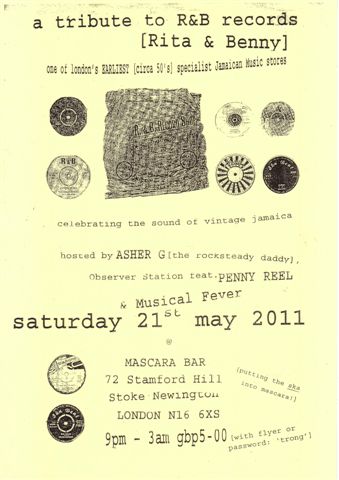
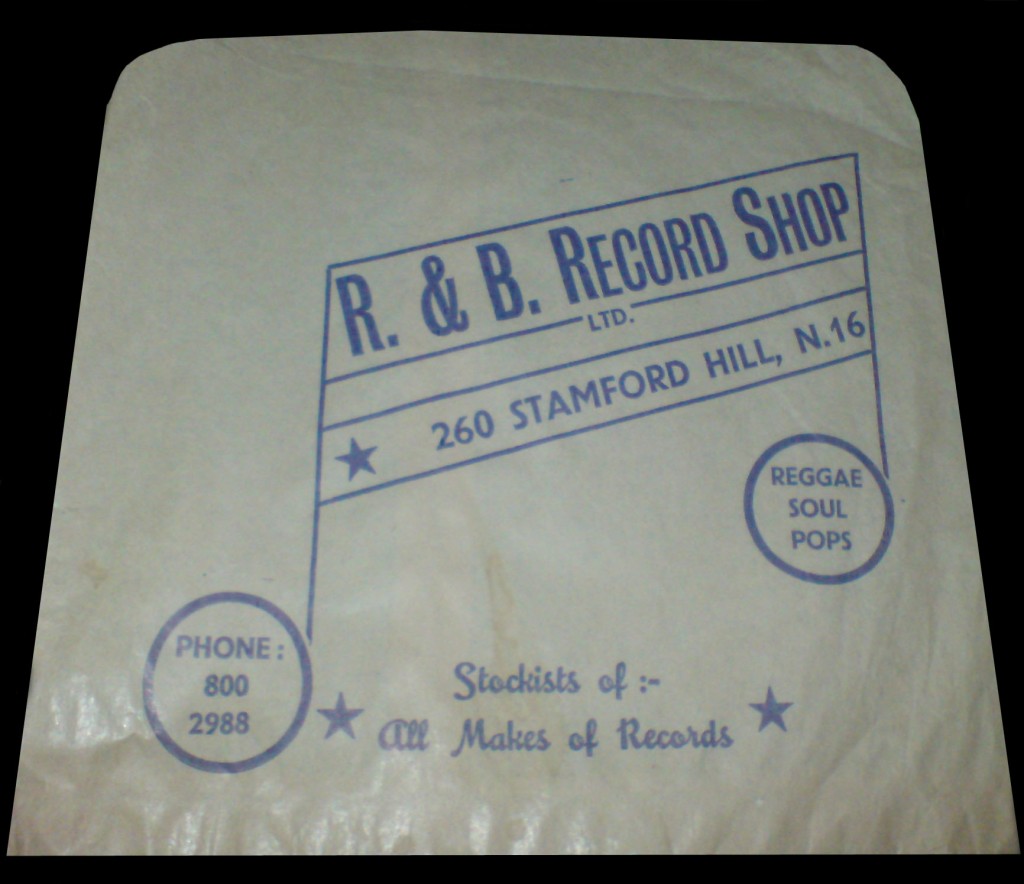
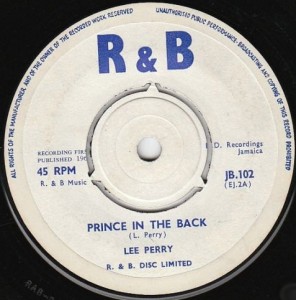
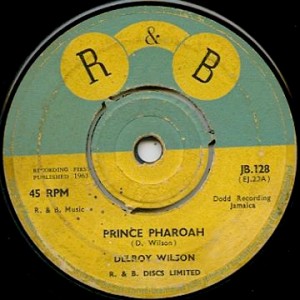
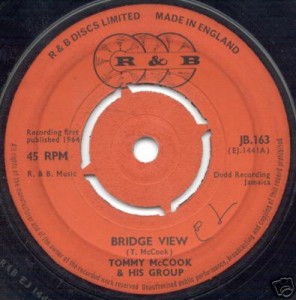
OH! OH! OH! that’s where i live now!!! AWESOME history round here!
Great work John, I feel like a lazy history student reading such a compelling piece on the part of town I live in. Thanks
Thanks for publishing Malcolm’s text. Fascinating story and another piece of the jigsaw added. I remember buying a copy of Lee Perry’s Man & Wife/Madhead on R&B in a junk shop as a kid in 1979 but wasn’t aware of the history behind the label.
Great to see this. We recently had an event as part of Stoke Newington Literary Festival about ska and reggae in the local are, the 4 Aces Newton Dunbar was excellent, and there was so much we didn’t have time to talk about. Hopefully we’ll be doing a similar event at the festival next year and throwing some more sounds into the mix for a bigger dance up afterwards. There’s just not enough of this kind of history and it’s always a pleasure to see it.
Interesting history John, R & B sounds like quite the eclectic family of labels. Probably the only label to release work by Louis Prima and Lee Perry.
Brilliant piece! I’ve got the two instrumental ska flavored 45’s the label did by Georgie Fame (just credited to The Blue Flames) and I always wanted to know more about it, cheers!
I’m glad people like Malcolm’s text as much as I do!
Bilko – I enjoyed your event very much also – quite a big contrast between the town hall and the mascara bar, and that’s all for the good I think. It would be great if there was something similar next year as well. The more the better…
Pingback: UNCARVED.ORG BLOG » BLOG ARCHIVE » 2011 LONDON RIOT SONGS (REGGAE ROUNDUP)
Amazing piece!!
Dear Malcolm,
This has been a lovely piece for me to read. I am Rita and Benny’s great grand-niece. My Mum used to work in their shop. The shop closed before I was born. Rita and Benny have both passed away now. They were amazing people and I am always eager to find out more about them.
Thanks
Hayley
great to hear from you Hayley and I’m glad you liked the piece – I’ve passed on your comment and email to Malcolm.